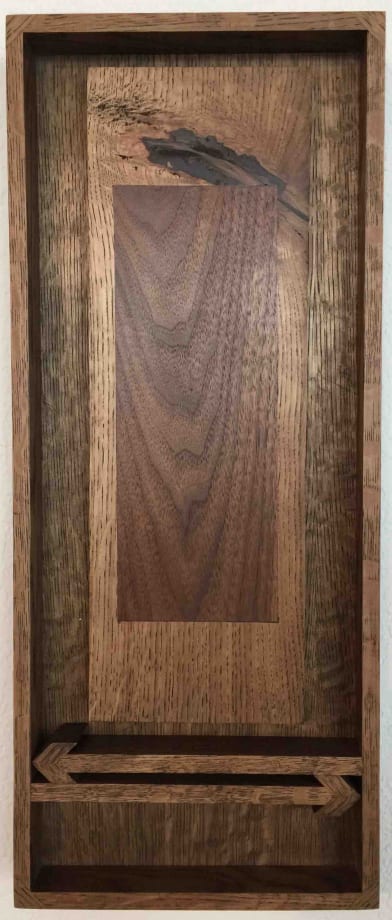Nate Young’s ongoing series of altarpiece works exemplifies the conceit at the heart of his practice: the investigation of structures of knowledge, the authority and language of systems, and the illusiveness of meaning.
All handcrafted in wood, with graphite drawings and often gold leaf, Young’s altarpieces express a highly sincere spiritual drive while also questioning the medium through which that spirituality is conveyed. Like Young’s contributions to Fore at the Studio Museum in Harlem (2012), these works activate an ontological space where disparate realms of knowing collide. Born from an interest in the theological diagrams and the ecclesiastical architecture Young encountered as the son of a theologian, they tie the aesthetic language of the church to the measured graphic expression of other fields of knowledge. Semiotics, for example, in particular the visual expression of sign and signified as conveyed by Swiss semiotician Ferdinand de Saussure (1857-1913), has a repeated presence in these compositions – a simple oval or circle, bisected by a single line. Young strips away any specific content, however, leaving behind a universal lexicon of primordial signs and symbols – arrows, circles, grids, and negative spaces – that strongly suggest meaning without in fact conveying it; a profound void, at once empty and full, that invites the viewer’s activation. His works contain a quiet gravitas and austerity seemingly at odds with their meticulously hand-crafted nature, prompting a post-minimalist interrogation of authority, material, and the artist’s hand.

